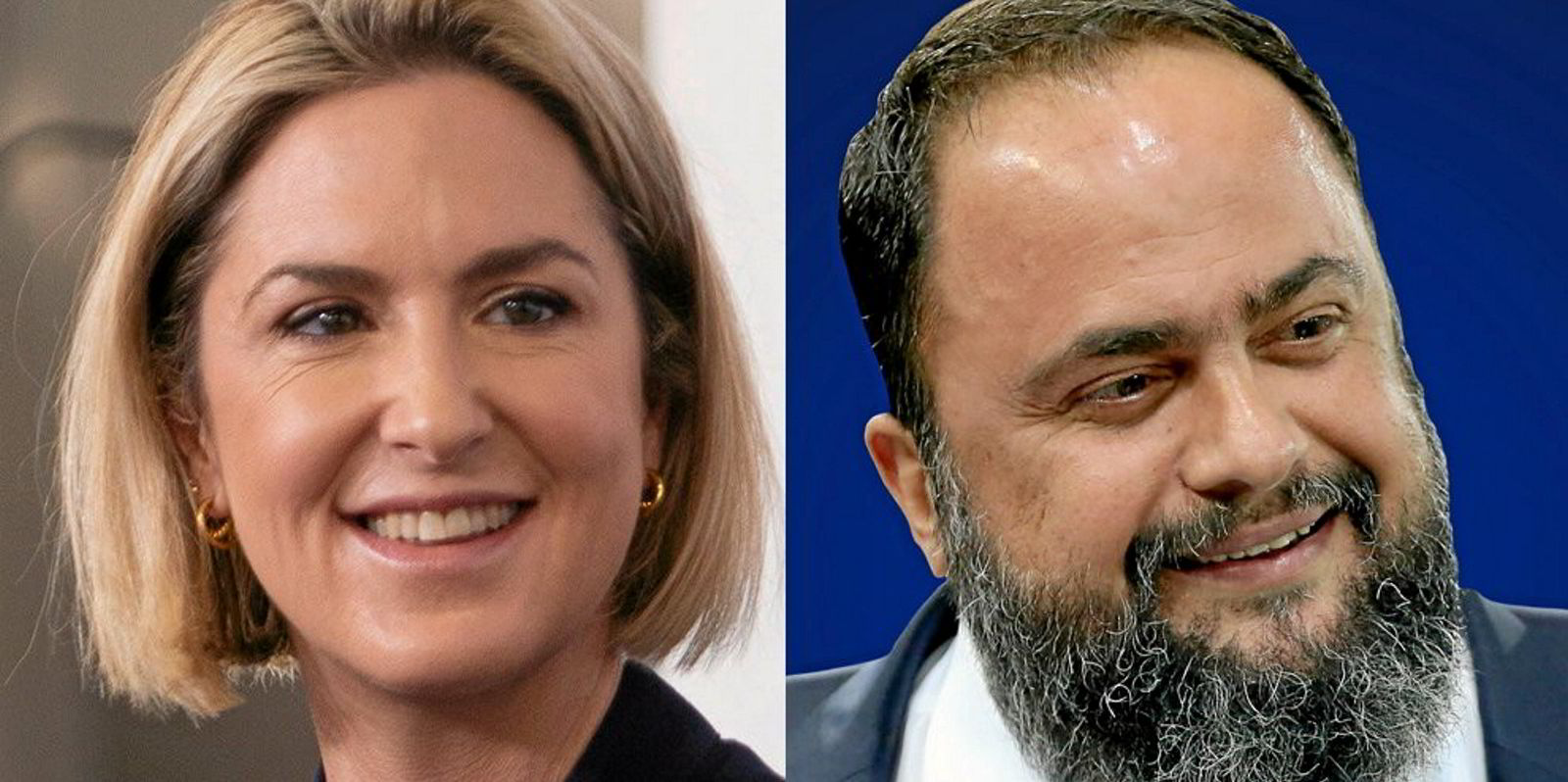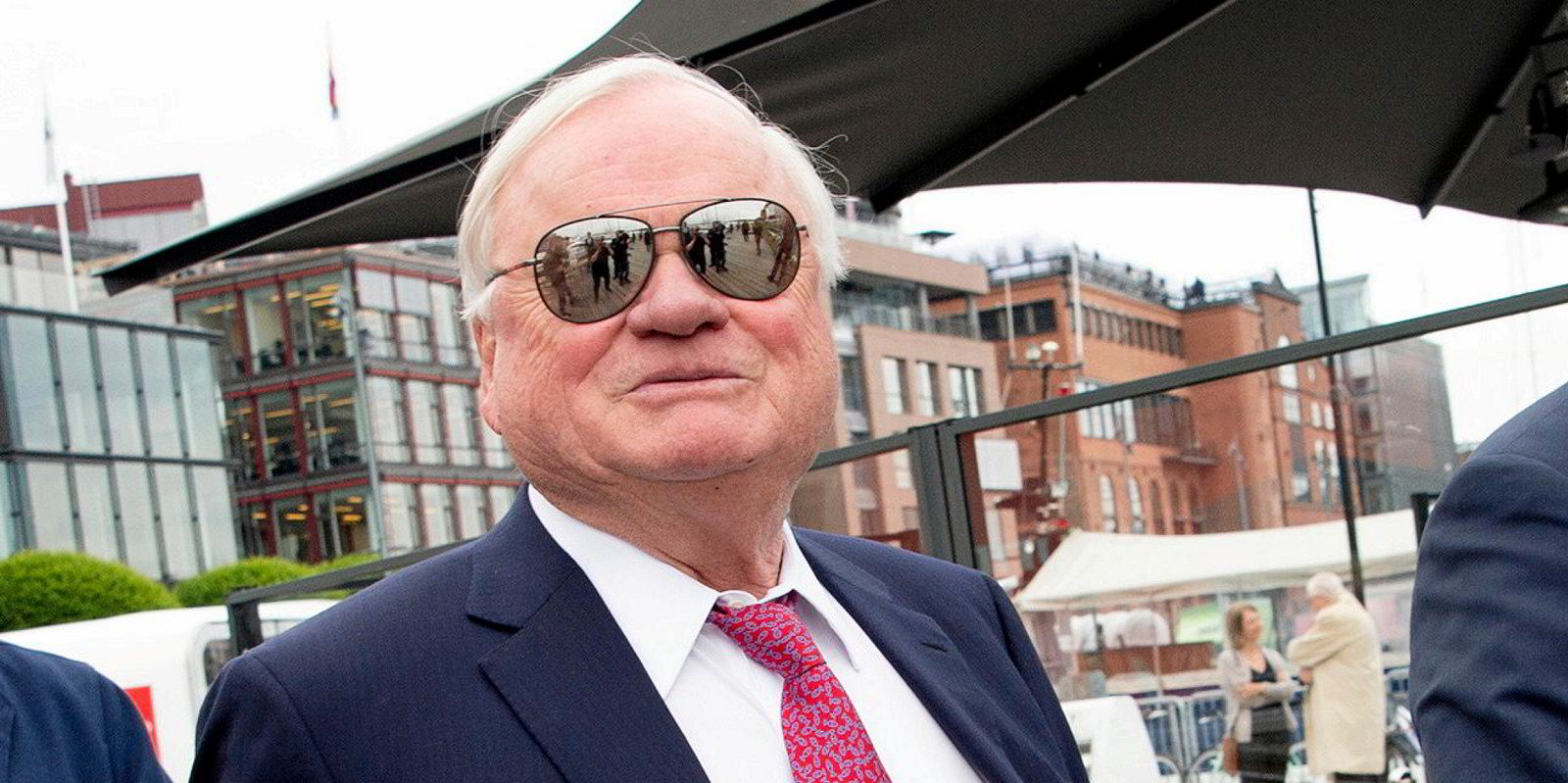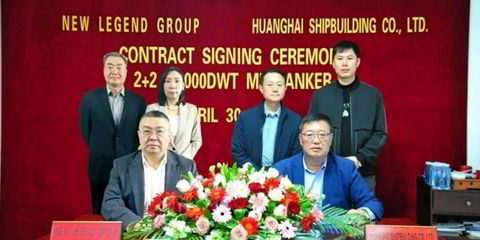Changing trade patterns, an ageing fleet, as well as a limited orderbook are prompting owners to invest in suezmax newbuildings again, says Simpson Spence Young (SSY).
Including possible options, orders have been placed for more than 20 suezmaxes since the start of the year compared with just two in the whole of 2022, the broker said.
TradeWinds reported in April that Greek shipowners Maran Tankers and Capital Marine had ordered up to 16 LNG dual-fuelled suezmaxes at China’s New Times Shipbuilding.
Meanwhile, Euronav exercised two options for two suezmaxes and John Fredriksen’s Seatankers ordered two scrubber-fitted suezmaxes.
“Recently we noted tanker contracting, particularly for product tankers, had risen sharply since the start of 2023,” SSY said.
“Since then, there has also been a significant rise in crude tanker orders with suezmaxes being the dominant vessel class.
“The lack of new tonnage set to be delivered and the current age of the fleet, in tandem with the shift in trade flows and the versatile nature of suezmaxes with the ability to cannibalise both VLCC and aframax trades has made these vessels very attractive,” the broker added.
As of the end of April, SSY estimates that over 14% of the suezmax fleet is aged over 20 years old, while a further 17% are aged between 15 and 19 years old.
“With almost a third of the trading suezmax fleet over 15 years old there is a need for tonnage replenishment,” the broker added.
In contrast, there are only 20 confirmed suezmax newbuildings on order for delivery by 2025.
SSY said the lack of tanker ordering over recent years, as yards favoured gas carriers and containerships, has meant the suezmax orderbook as a percentage of the fleet stood at 2% as of the start of 2023, a dramatic decline from 2009 when the number of vessels on the orderbook accounted for 46% of the fleet.
The recent rise in orders has seen this rise to 5% of the suezmax fleet including letter of intent and options as of end-April.
“Trade flows have [also] shifted drastically in the past year as importers of Russian crude oil and refined products source alternative supplies following the invasion of Ukraine,” SSY said.
“The shift has largely benefitted suezmaxes and aframaxes as Europe’s crude oil requirements are fulfilled by Atlantic-based and Middle Eastern suppliers instead.”
SSY said that tonnage dislocation brought about by the longer voyages and thus tonne-miles and the rise of sanctioned and price-capped trade has [also] resulted in the removal of tonnage from the trading fleet and led to periods of high volatility in the earnings environment.
“Although sanctioned trades have potentially extended the lifespan of older vessels, we do expect removals to increase over the medium-term as emission regulations and vessel efficiencies become more prominent,” the broker said.
“For example, some charterers may be unwilling to fix vessels with poor Efficiency Existing Ship Index ratings or those that have traded Russian oil, which could limit the regions older vessels are able to trade in.”





